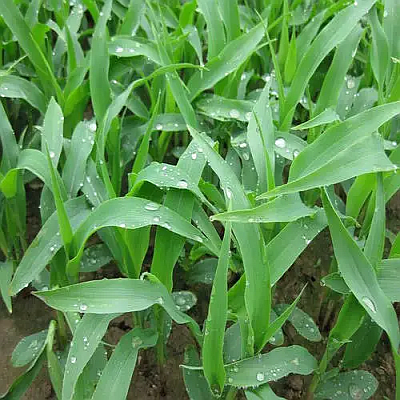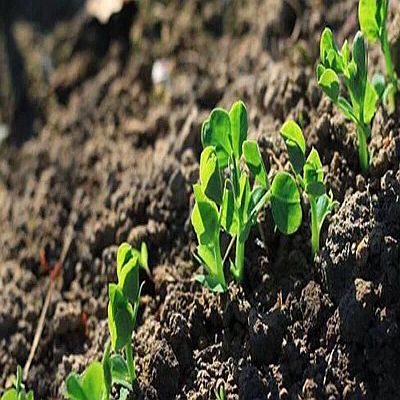- Home
- News
- Potassium humate can improve crop drought resistance, cold resistance and disease resistance
Potassium humate can improve crop drought resistance, cold resistance and disease resistance
Potassium humate is a highly efficient organic potassium fertilizer, because the humic acid in it is a bioactive agent, which can improve the content of soil available potassium, reduce the loss and fixation of potassium, increase the absorption and utilization rate of potassium by crops, and also has the functions of improving soil, promoting crop growth, improving crop stress resistance, improving crop quality and protecting agricultural ecological environment; It can be mixed with urea, phosphate fertilizer, potassium fertilizer and trace elements to make high efficiency and multifunctional compound fertilizer. Potassium humate is a kind of aromatic hydroxyl carboxylate with high molecular heterogeneity. Its appearance is black particles or powdery solid. It is the product extracted by KOH liquid reaction after fine separation of lignite. It is soluble in water, alkaline and contains carboxyl, phenolic hydroxyl and other active groups. In agriculture, humic acid fertilizer made by combining nitrogen, phosphorus, potassium and other elements (for example, ammonium humic acid fertilizer can be made by neutralizing humic acid with ammonia), which has the functions of increasing fertilizer efficiency, improving soil, stimulating crop growth and improving the quality of agricultural products; Nitro humic acid can be used as acid regulator for rice seedling raising; Magnesium humate, zinc humate and urea iron humate have good effects on supplementing magnesium deficiency in soil, zinc deficiency in corn and iron deficiency in fruit trees, respectively; Humic acid mixed with herbicides such as herbicide and atrazine can improve efficacy and inhibit residual toxicity; Sodium humate is effective in the treatment of apple tree rot. The humic acid functional group in potassium humate can absorb and store potassium ions, prevent them from losing with water in sandy soil and leaching soil, and prevent the fixation of potassium by cohesive soil. In addition, some parts of potassium humate are low molecular humic acids such as fulvic acid, which can dissolve minerals such as potassium silicate and potassium feldspar. It can decompose slowly, increase the release of potassium and increase the content of available potassium. Compared with ordinary potassium fertilizer, the utilization rate is increased by 87% – 95%, which increases fertilizer efficiency, crop yield and quality. It has the combination of land use and land conservation; Long term and quick impact coordination; It combines the advantages of inorganic fertilizer and farm fertilizer and is superior to them. It has a good nutrient release regulation function. It is a good controlled-release fertilizer, so that the nutrients in the early stage are not too much, the nutrients in the later stage are not too low, and the fertilizer supply curve is stable. The release rate can also be regulated by physical, chemical and biotechnology means to realize the two-way regulation of promoting release and slow release.
Effect of potassium humate on crop development
Early germination and high emergence rate: The application of potassium humate can accelerate seed germination and improve seedling emergence rate, especially in early spring and low temperature (generally, it can germinate 1 ~ 3 days earlier and increase seedling emergence rate by 10 ~ 30%).
Developed roots and strong absorption: Potassium humate plays a special role in promoting the root development of crops. Many agricultural scientists call potassium humate “root fertilizer”. The impact on the root system is mainly reflected in stimulating the division and growth of root meristem cells, making the seedlings root faster, the secondary roots increase, the root volume increase, and the root elongation, which eventually leads to the greatly enhanced ability of crops to absorb water and nutrients.
Effect on the growth of aboveground vegetative body: On the basis of sufficient nutrient supply, the stimulating effect of potassium humate can make the aboveground nutrients grow vigorously, which is reflected in plant height, stem diameter, leaf number, dry matter accumulation and so on.
Potassium humate improves drought resistance of crops: The application of potassium humate can reduce the stomatal opening of plant leaves, reduce leaf transpiration, reduce water consumption, improve the water status in the plant and increase the water content of leaves, so as to lay a foundation for panicle and seed. The application of potassium humate can also improve the content of chlorophyll and the normal progress of photosynthesis, It is very important for the accumulation of substances and the increase of 1000 grain weight.
Enhance the cold resistance of crops: The application of potassium humate had obvious effects on early spring seedling raising in the South and cold resistance of wheat in the north. In early rice seedling raising in southern China, low temperature and rainy weather are often encountered, and dead and rotten seedlings often occur. After the application of potassium humate, the ground temperature is improved and the quality of seedlings is generally improved. Winter wheat seedlings in most areas of northern China are generally damaged by winter because of the frequent “late spring cold”. The application of potassium humate effectively improves the cold resistance of wheat and reduces the freezing injury to varying degrees.
Prevention and control of plant diseases and insect pests and immunity: Potassium humate can effectively control underground diseases and insect pests, plant diseases and bacteria. Potassium humate has obvious control, bacteriostatic and bactericidal effects on rot of fruit trees, small leaf, yellow leaf disease, downy mildew of cucumber, anthrax of pepper and virus disease. Potassium humate is applied without any pesticides, but there are no major diseases and insect pests in cucumber from beginning to end.

